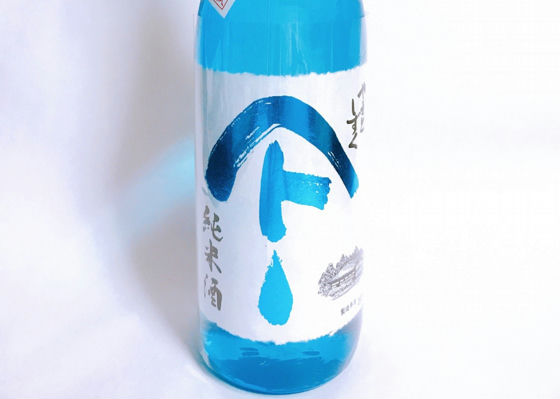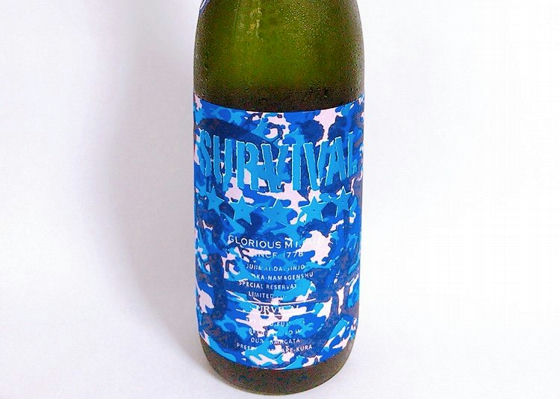Timeline
shitakkeJunmai Daiginjo that is not like Yamada Nishiki. The sweetness is moderate. It takes some time for the flavors to develop. Personally, I've always had the impression that Yamadanishiki has a sweet aftertaste, but the dryness of the flavor reminded me of the diversity of Japanese sake. And even though it's supposed to be a little out of character for my taste, it was a dish that made me drink more!
As the temperature rises, the taste is distinctly sweet at first and then dry (and crisp) at the end. It broke the stereotype that Yamada Nishiki is sweet!
The brewery started brewing in 1922. The name of the brand was changed from the famous water "Horime-no-Ido" to "Horinoi". 
shitakkeThe perfect summer rummage! The sensation on the tongue is similar to a light, slightly carbonated sensation. The sweetness isn't as strong, but it's nice and thirsty! Thanks to the slightly bitter aftertaste, your mouth is refreshed. I was able to reconfirm the deliciousness of summer sake♩
It looks like it is bottled after the top tank, only burned once and stored cold. Someone who posted this before said it was cool and refreshing, but I'm guessing it's because it's only burned once and it's fresh!
The Yamato Shizuku brand was launched about 20 years ago. The rice is grown in the rice paddies within a 10-kilometer radius of the brewery. The water comes from a spring located in the mountains deep inside the brewery. So the "domaine" we've been seeing a lot lately started that long ago!
The rice was also grown by a contract farmer, and "terroir" seemed to be the correct term to use, referring to the character of the land, rather than "domaine". Again, I didn't learn enough. shitakkePray for a reprieve from the plague. The smell and the first impression you get when you drink it is fragrant and gorgeous. That's the Daiginjo! After that, I felt the flavor seemed to disappear in a stoned way. Whether you take that as clear or lacking is a matter of preference. Also, perhaps because of the lightness of the drink, I was a little concerned about the degree of alcoholiness that I usually find desirable.
After all, it's a lovely drawing of Amabie-sama. She has been featured on the cover of Discover Japan magazine, and she is one of the leading artists in the Japanese sake amabiye industry.
This is the second Daiginjo, following the first one, "Tokubetsu Junmai-shu. I would have liked to try another Amabie-sama... 
shitakkeFlavor explosion! If I had to compare it to a ripe apple, I would say it felt like a sweetness, but the flavor won out over the sweetness. The acidity is a nice accent and adds a nice depth of flavor!
It is also made with aging in mind and seems to have a lot of amino acids, which are the source of flavor. It has an amino acid level of 2.5 degrees. I think it brings out the flavor of the food. Also, it sounds like it would go well with vanilla ice cream! When we eat it, its taste will change to a rich ice cream.
It is said that the fourth brewer of the brewery was severely damaged by an earthquake in the Meiji era, and the brand was renamed "Daruma Masamune" after seven falls and eight wakes. Considering the time that has passed and the fact that they are now producing delicious sake in the modern age, it's an auspicious sake.
When I bought it, a 720 ml bottle was about 2,000 yen, but it was about 1,300 yen online. I have to admit, a sigh went out, but it was so good I could have swept it under the rug! LOL! 
shitakkeGentle sweetness and a tangy aftertaste. The impression on the palate and the aftertaste are in stark contrast. It has a refreshing taste, so you won't get tired of drinking it!
Due to my lack of study, I didn't have an image of sake in Shimane Prefecture, but I did learn that there is a delicious sake in the area. I didn't know it was the birthplace of sake!
The brewery, which has been in existence for about 300 years, uses ultra-soft water for its brewing water, which is considered unsuitable. The brewery uses ultra-soft water, which is unsuitable for brewing, in order to bring out the flavor of the rice. The origin of "Gassan", the mountain you can see from the brewery, comes from the Warring States period, when there was a castle and the best sake of the year was named after the best sake of the year in the region, which was offered to the lord.
It's said that gods gather in Izumo, but I guess the only thing they have for a party is beautiful sake. I'm jealous when I imagine it!
There are many theories about the birthplace of sake. Again, I didn't study them. The reason for the Shimane theory is that there is an account of it in the history books. shitakkeNeat and sweet! The light acidity is followed by a light lingering taste that quickly fades away. It's the kind of drink you want to drink all summer long!
Over time, it changed to a mellow mouthfeel. I left the bottle chilled, so it probably wasn't a temperature increase. This one is... very tasty!
The brewery where it was brewed uses spring water from the Shirakami Mountains, a World Heritage site that rises from Aomori to Akita. Without a doubt, the water must be delicious.
According to the back of the label, this sake is the counterpart to Yamamoto's Pure Black. It has a juicy, citrusy sourness and is as crisp as a Japanese sword. It would be fun to compare drinks! shitakkeIt has a crisp dry taste. When you open it, you think it's a little light, but as the temperature rises, it becomes more rewarding to drink. I think it also serves as a refreshing reset for the palate with strong flavored meals.
According to my research, the recommended drinking temperature is 5-10 degrees. It's unpasteurized and has an alcohol content of 17 degrees. It's a little high.
The name "Kutouryuu" may have originated from the Kutouryu River and Kutouryu Lake in Fukui Prefecture. It is not Yamata-no-orochi, but if there were a nine-headed dragon, it would be a sure sign of a dragon with nine heads. 
shitakkeFruity! It has a firm sweetness and is not heavy, but has a great flavor. Personally, I've always had the image that unfiltered unpasteurized sake is a bit heavy in the mouth, so I was pleasantly surprised to find that this one had a very strong flavor. So I was very happy to see that it was a very satisfying drink that kept me coming back for more.
The rice used for this sake is Tamanae (Yamazake #4). It's a cross between the famous Yamada Nishiki and Kinmon Nishiki. It was the first time I had ever heard of Kinmon Nishiki, which is also referred to as "the rare rice. Kinmon Nishiki is from Nagano Prefecture and has a deep and rich flavor. Maybe they have inherited each other's characteristics!
This sake is brewed by a descendant of a relative of the warlord, Kato Kiyomasa, who was an expert in castle construction. Don't be defeated by the natural disaster in Kumamoto!
Someone posted this before, but the label looks like a Japanese national football uniform! Hey. shitakkePerfect for a mid-meal drink! The Junmai on the right side is slightly cloying, and you can taste the rice firmly. The Junmai Ginjo on the left side has a refreshing sweetness and the acidity is less strong than the Junmai, making it easier to drink. By the way, neither of them have the taste of watermelon as depicted in the picture, but this is a sake that goes well with a meal! It was.
Chilling it out made it seem more refreshing! Junmai is probably better suited to meals. I think summer sake tastes better when it's cold and crispy.
Hitogokoro" is a kind of sake rice born in Nagano prefecture. It is said to make a light and wide flavored sake. shitakkeIt's like a white wine. The acidity is reminiscent of citrus, like lemon. It's also low in alcohol at 13%, so it's easy to drink. It was a delicious sake, which explains the name "Umifudo," written as "Seafood" and read "Seafood!
A junmai sake from a brewery in Akitsu, Hiroshima Prefecture, facing the Seto Inland Sea. Hiroshima Prefecture is the largest producer of lemons in Japan. This is a product that has taken root in the community.
I was impressed by the thoroughness with which even the back of the label was designed.
Hukucho: "The Hundred Test of the Millennium Sake
It seems that "Tomikucho" is the main brand name of the brewery. I'd like to pick up on these little tidbits as well.
Ginjo-type sake is also delicious, but we realized once again that Junmai-shu is not inferior to Junmai-shu. Yes, sir! RecommendedContentsSectionView.title










